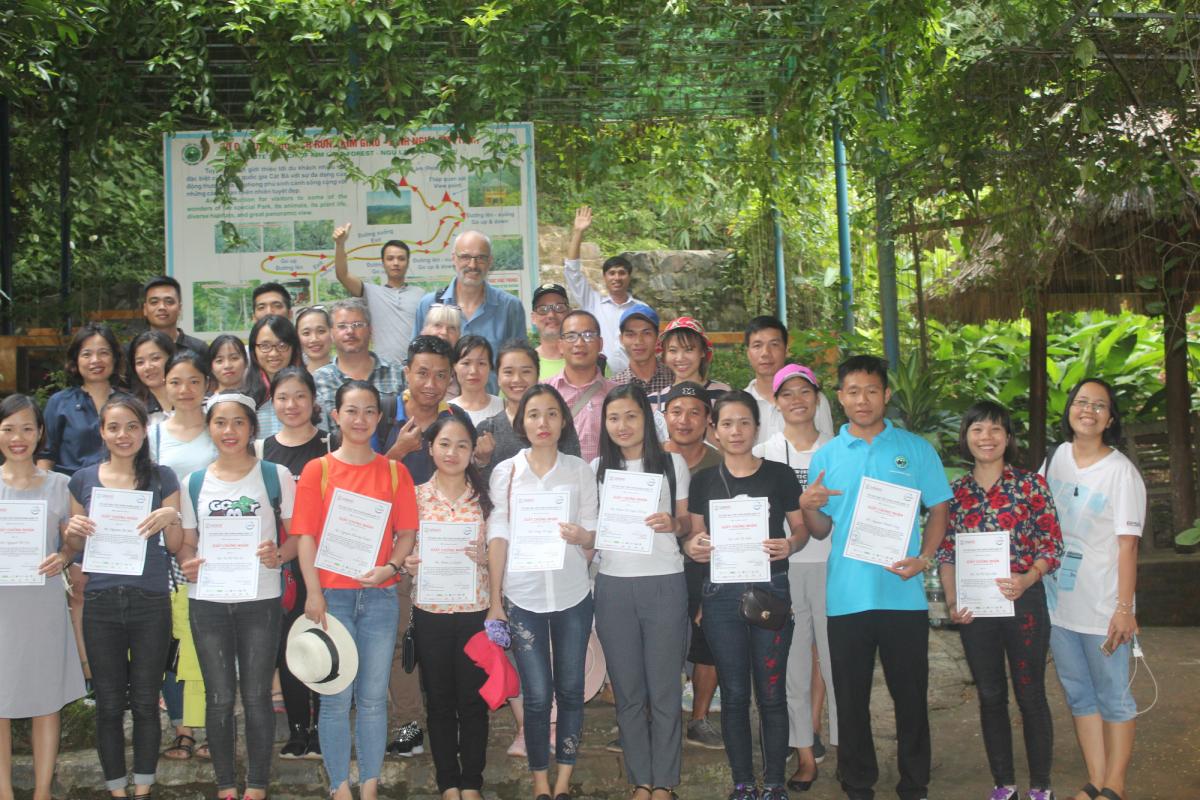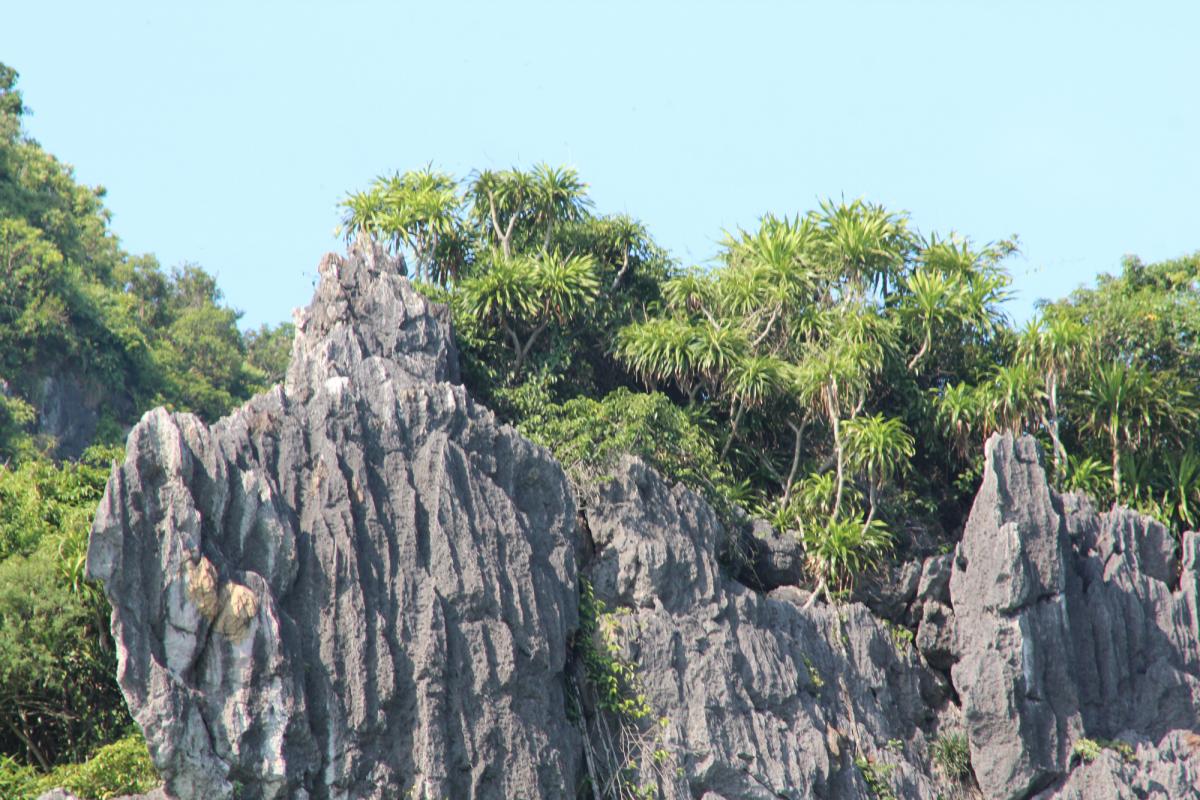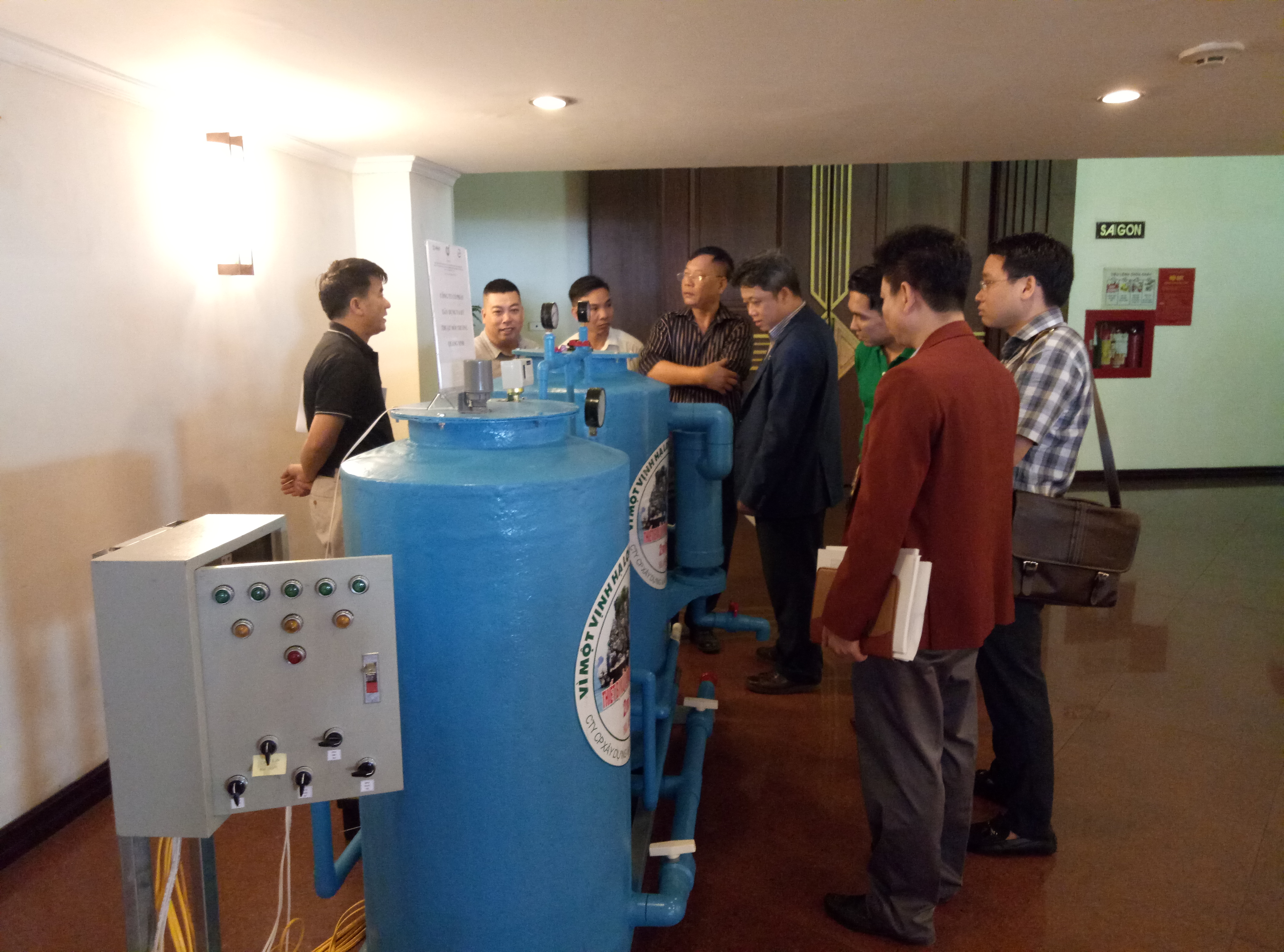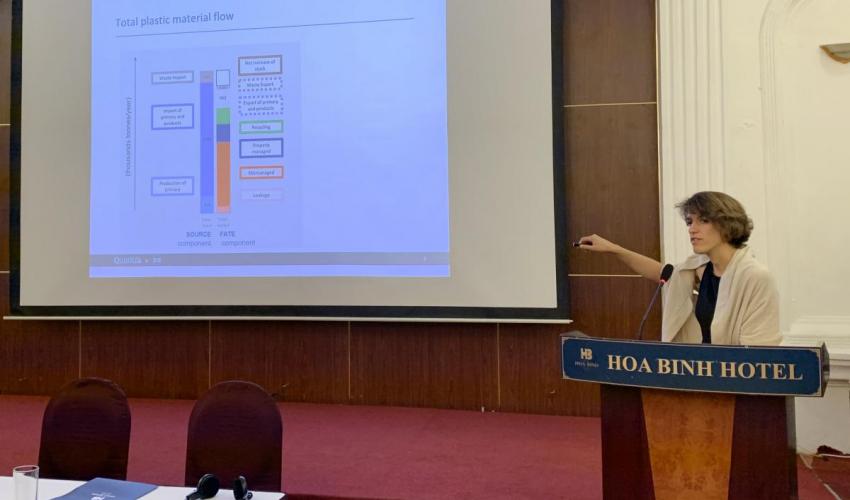“The longest and most useful trip to a cave I have ever had”
Ha Long Bay has been recognized as a World Heritage Site by UNESCO twice for its outstanding universal values. But what are those values and why do they make Ha Long Bay so special? Such information seems only to be known by a few scientists and experts while the vast majority of visitors are none the wiser. A big problem is that most tour guides know nothing of the formation of the karst systems in Ha Long Bay and Cat Ba. So they tell visitors stories of legends such as the lady who cried to death, her body frozen in the shape of a stalagmite.
After a first round of tour guide training in December 2016, IUCN organized the second session on August 26-27 as part of the USAID Ha Long-Cat Ba Alliance. The session attracted 41 tour guides and tourism specialists and focused on the development of karst formations in Cat Ba. The training was led by Dr. Jaap Vermeulen, one of the world’s leading experts on karst biodiversity. Dr. Vermeulen explained karst processes, how the karst was formed, how species adapt to the harsh conditions and how the Cat Ba karst differs from karst elsewhere.
According to Dr. Vermeulen, the endless complexity of the karst-sea interface, spread out over a large area, is its primary outstanding universal value. “Cat Ba and Ha Long together are a spatial representation of how repeated marine transgressions transform a mogote-cockpit karst landscape, from the first inundation of cockpits, to the last remnant limestone crests in open sea. Nowhere else is this process visible in so much detail," said Dr. Vermeulen.
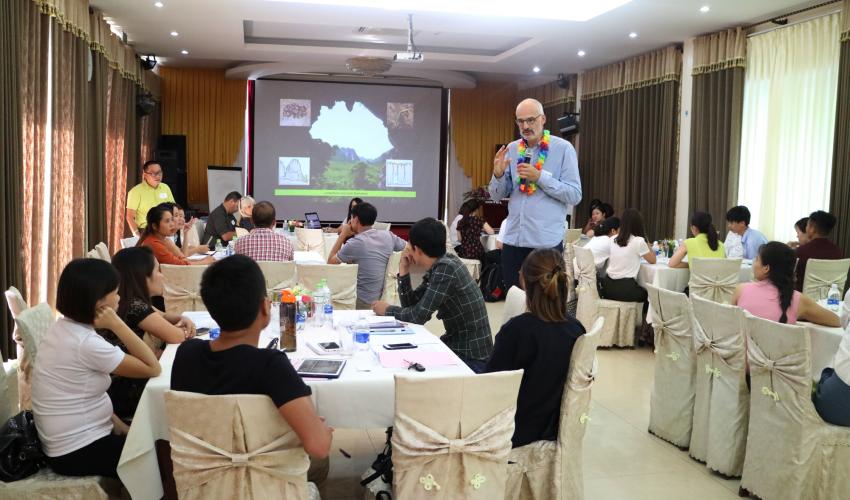 Photo: Dr. Jaap Vermeulen was delivering the training to tourist guides © IUCN Viet Nam
Photo: Dr. Jaap Vermeulen was delivering the training to tourist guides © IUCN Viet Nam
A skilled illustrator, Dr. Vermeulen provided vivid drawings of how the karst develops over time. “Sessions on the formation of limestone, caves and sea lakes are very useful to us and also easy to understand. It will help us to provide more information about Ha Long and Cat Ba to tourists," said Ms. Nguyen Thi Yen of Paradise Cruise Company.
At the training, participants had a chance to practice what they had learned to tourists in simple language. A field trip gave the tour guides the chance to visit the karst ask questions about stalactites and stalagmites, evidence of sea erosion at the base of the hills, the presence of small beaches made of trapped sediment, and steep sea-facing cliffs caused by karst dissolution of rock. Different plants and animals were identified and their adaptations to extreme environmental conditions explained.
"Jaap helped me to see Ha Long and Cat Ba with different eyes and this is the longest and most useful trip to a cave I have ever had," said Kai Schroter Marcus, Director of HTM Consultancy Company when visiting the Trung Trang cave.
“The knowledge of the geomorphology and biodiversity from the training is very useful and meaningful for tour operators as those people do not know the issue well. I am very impressed with Dr. Jaap’s presentations and the way he delivered it," said Pham Hong Long, Head of Tourism Faculty at Vietnam National University.
IUCN will produce a handbook for tour guides with a frequently asked questions section and will work with the Cat Ba Langur Conservation Project to make a map of points of interest that tourists can visit. These materials will help tour guides answer questions about the unique ecosystems and biodiversity of Ha Long bay and Cat Ba, an important step in protecting their outstanding universal values.
